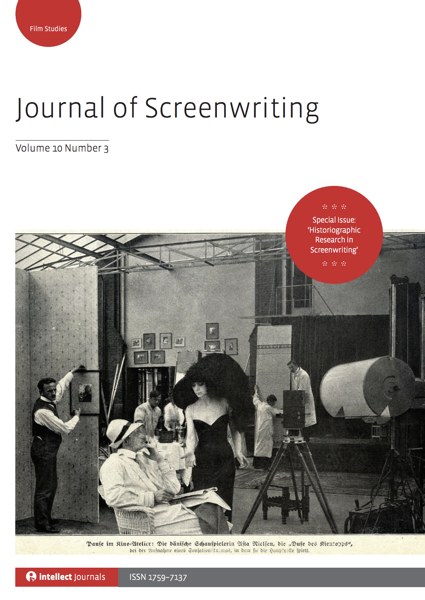Highlighting the articles in the past editions of the Journal of Screenwriting, of which I am the Book Reviews Editor. Hopefully these abstracts will entice you to did a little deeper into the history and future of screenwriting. — Rosanne
This article studies the mutual and exclusive relationship between the history of popular Hindi cinema and the writing of the screenplay by finding dominant points of reference in their individual and overlapping histories. It connects the unique storytelling tradition of Hindi cinema with the subsumed creative identity of a screenwriter. To do this the article focuses on significant historical markers in Hindi cinema: the Silent era, the Talkies, the Golden era of the 1950s, the New Wave of the 1960s, the SalimJaved era of the 1970s and the New New Wave of today. The New New Wave in Hindi popular cinema aims to recognize and legitimize the presence of the story and the screenwriter. The article studies the evolution of this recent phenomenon and examines the academic and industrial variants that have led to the coming of this change in Hindi cinema.
The Journal of Screenwriting is an international double-blind peer-reviewed journal that is published three times a year. The journal highlights current academic and professional thinking about the screenplay and intends to promote, stimulate and bring together current research and contemporary debates around the screenplay whilst encouraging groundbreaking research in an international arena. The journal is discursive, critical, rigorous and engages with issues in a dynamic and developing field, linking academic theory to screenwriting practice.
Get your copy and subscription to the Journal of Screenwriting Today!
* A portion of each sale from Amazon.com directly supports our blogs
** Many of these books may be available from your local library. Check it out!



![22 Modern-Day Vampires from When Women Write Horror with Dr. Rosanne Welch [Video] (1 minute)](https://rosannewelch.com/wp-content/uploads/2020/08/rmw-cpp-horror-22.jpeg)




![21 Buffy and Masculinity from When Women Write Horror with Dr. Rosanne Welch [Video] (1 minute 9 seconds)](https://rosannewelch.com/wp-content/uploads/2020/07/rmw-cpp-horror-21.jpeg)



